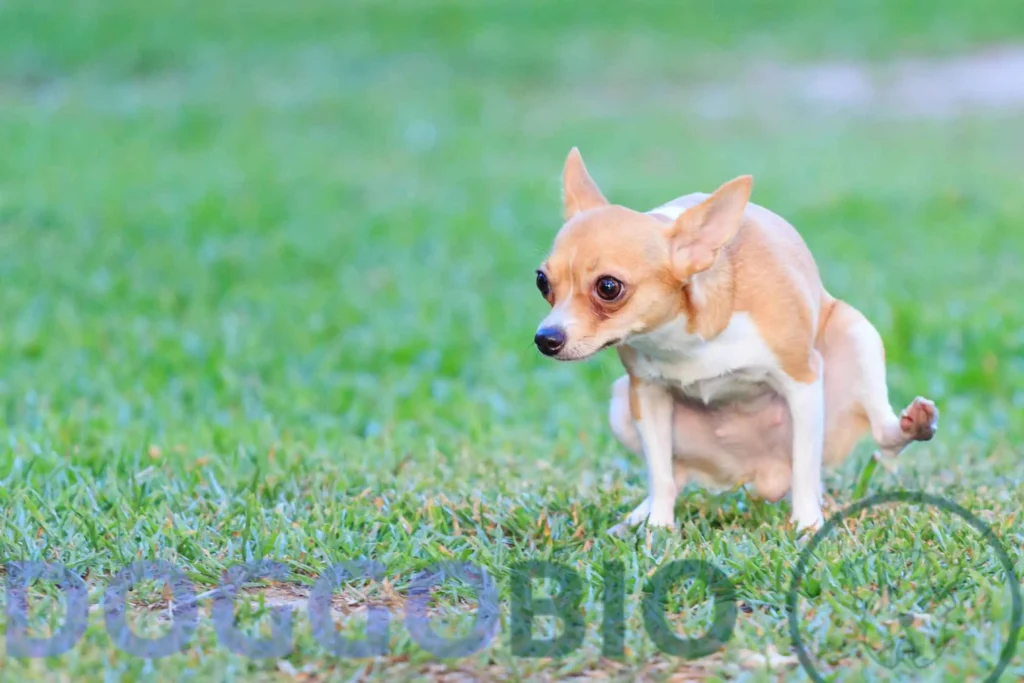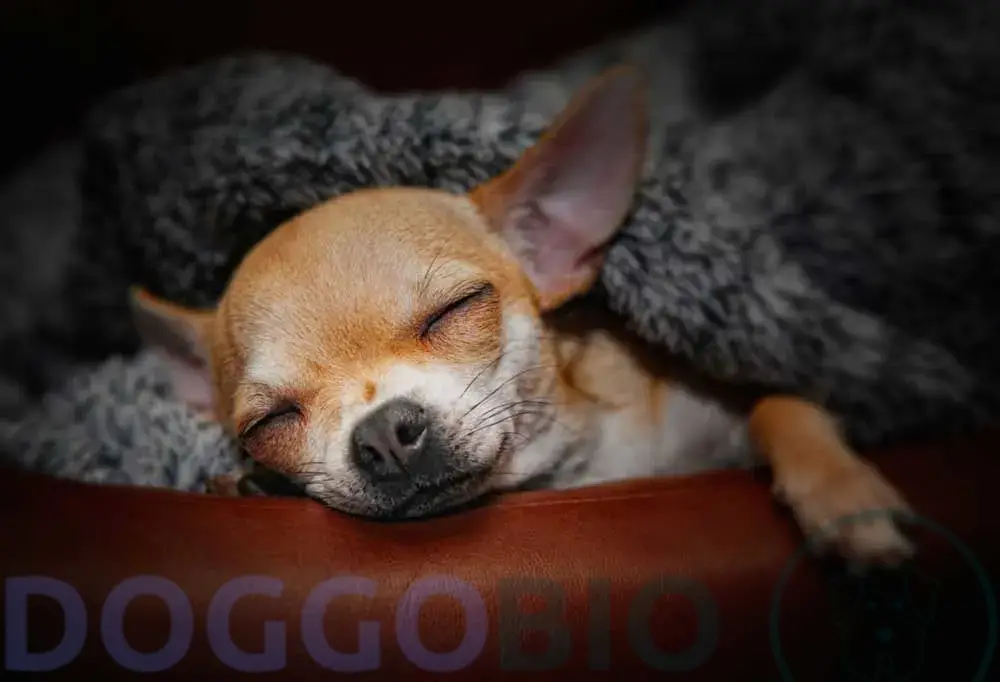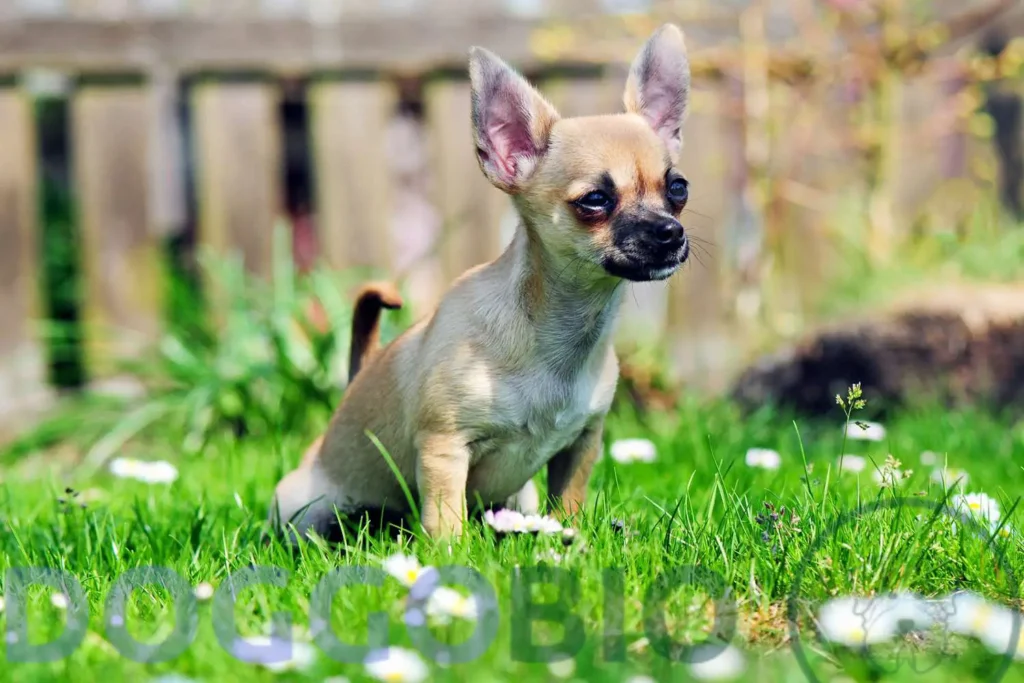Welcome to the comprehensive guide on Chihuahua potty training and dog training! If you’ve recently welcomed a charming Chihuahua into your home or are considering doing so, you’re about to embark on an exciting journey of companionship.
However, like any new pet owner, you might face the challenge of teaching your adorable Chihuahua proper potty habits. Fear not; this guide provides invaluable insights, effective strategies, and practical tips to navigate Chihuahua potty training.
By understanding the unique characteristics of this small yet spirited breed and tailoring your approach to their needs, you’ll be well on your way to fostering a clean and harmonious living environment for both you and your pint-sized furry friend.
Let’s delve into the world of Chihuahua potty training and set the foundation for a happy, healthy partnership!
When Do You Start Potty Training A Chihuahua?
The golden window for initiating potty training is when Chihuahuas are between 3 to 4 months old. This phase is characterized by heightened curiosity, making them more receptive to learning. However, it’s also a time of distractions, as everything is new and exciting for them.
Preparation for Chihuahua Potty Training
Before embarking on the potty training journey, being well-prepared is vital. This means having all the necessary tools and equipment at hand.
- Chihuahua puppy pads are essential as they’ll be the designated spot for your pup to relieve themselves indoors.
- A dog crate is also crucial. It’s a space for them to sleep and a safe haven. Chihuahuas, being small, can feel overwhelmed in large areas, and a crate gives them a sense of security.
- The convertible pet gate can help restrict their movement, ensuring they don’t have accidents all over the house.
- Lastly, always have toilet paper or wipes ready for any mess.
Being prepared not only makes the training process smoother but also ensures that your Chihuahua has a comfortable and stress-free experience.
How To Train Your Chihuahua Potty Training?

Mastering the Basics
1.Positive Reinforcement:
Dogs, especially Chihuahuas, thrive on affirmation. Reward them every time they follow a command or exhibit the desired behavior. This could be in the form of a treat, a gentle pat, or verbal praise. This positive reinforcement strengthens their association between the act and the reward, making them more likely to repeat the behavior.
2.Start Early:
The adage, “The early bird catches the worm,” holds true for potty training Chihuahuas. Starting early gives them a clear understanding of what’s expected, setting the tone for their future behavior. At 3 to 4 months, their cognitive abilities are developing rapidly, making it an opportune time to introduce them to potty training.
3.Designate a Specific Bathroom Spot:
By designating a specific spot for them to relieve themselves, you’re creating a routine. This spot, whether indoors or outdoors, should be free from distractions. Over time, they’ll recognize this spot as their bathroom, reducing the chances of accidents elsewhere.
If you’re using puppy pads, ensure they’re always clean, creating a hygienic environment for your pup. This designated spot also gives them a sense of security, knowing that this is their space. Over time, with consistent training, they’ll automatically gravitate towards this spot whenever they feel the need to relieve themselves.
Establishing A Routine
1.Consistency is Key:
Chihuahuas, with their sharp intellect, quickly pick up on routines. Feeding them, playing with them, and taking them out for potty breaks at consistent times can make the training process smoother.
This routine gives them a sense of security, knowing what to expect and when. It also makes it easier for you to anticipate their needs, reducing the chances of accidents. Consistency also extends to commands. Using the same commands for specific actions ensures no confusion in the dog’s mind. Over time, this consistency in routine and commands makes the training process more effective and efficient.
2.Using commands and cues for potty time:
Communication is crucial. Using specific, consistent phrases like “go potty” or “time to pee” can signal to your Chihuahua what’s expected of them. Over time, these commands become ingrained, and just hearing them can prompt the desired behavior. Ensure that your tone is gentle and encouraging, making them more receptive to the command.
It’s also beneficial to observe their behavior post the command. If they seem confused or distracted, it might be a good idea to reassess the command or the training method. The key is ensuring the communication is clear, consistent, and positive.
3.Recognizing the Importance of Post-Meal Potty Times:
Just like humans, Chihuahuas need to relieve themselves after a meal. Being aware of this can significantly reduce accidents.
Typically, they’ll need to pee about 15 minutes post-eating and poop roughly 30 minutes after. Observing and acting on this pattern can make potty training more effective.
It’s also essential to ensure that their meals are at consistent times. This not only aids in digestion but also makes it easier for you to anticipate their potty needs.
4.Bathroom on Command:
With consistent training, it’s possible to train your Chihuahua to relieve themselves on command. This is especially useful during adverse weather conditions or when you’re short on with time.
The key lies in repetition and reward. Every time they follow the command, reward them, reinforcing the behavior. Over time, this command becomes second nature to them, making potty breaks more predictable and manageable.
5.Nighttime Breaks for Puppies:
Puppies, with their tiny bladders, need frequent potty breaks. It’s essential to take them out right before bedtime, ensuring a peaceful night for both of you. Additionally, first thing in the morning, take them out again. This routine helps in setting a clear day-night potty schedule.
It’s also crucial to ensure that their sleeping area is comfortable and free from distractions. A peaceful night’s sleep ensures that they’re refreshed and more receptive to training during the day.
Avoid Problems

1.Observation:
Each Chihuahua is unique, and they’ll have their signals indicating they need to go. This could be anything from sniffing around, whining, circling a spot, or showing restlessness. Observing and acting on these signals can make the training process smoother and more effective.
It’s also beneficial to maintain a potty diary, noting down the times they relieve themselves. Over time, this can help in predicting their potty breaks, making the training process more efficient.
2.Handling Accidents:
No matter how diligent you are, accidents are bound to happen. Instead of reprimanding, reassuring your Chihuahua and cleaning up the mess promptly is essential.
Enzymatic cleaners can effectively remove any lingering odors, ensuring they don’t return to the same spot.
It’s also crucial to analyze the cause of the accident. Was it due to a change in routine, a new environment, or some other factor? Understanding the cause can help in preventing future accidents.
3.Be patient:
Patience is the cornerstone of any training regimen. Chihuahuas, with their strong personalities, can sometimes be a handful.
However, they can be trained effectively with consistent training, positive reinforcement, and a lot of patience. Celebrate the small victories and remember that every dog learns at their own pace.
It’s also essential to ensure that the training sessions are short and positive, ensuring that your Chihuahua doesn’t feel overwhelmed or stressed.
4.Seek Professional Help:
If you feel you’ve hit a roadblock or your Chihuahua exhibits behaviors that you find challenging to manage, don’t hesitate to seek professional help.
Dog trainers or behaviorists can offer insights, techniques, and strategies tailored to your Chihuahua’s specific needs. They can also provide a fresh perspective, identifying any gaps in your training regimen.
Remember, the goal is to ensure that your Chihuahua is well-trained and happy, and sometimes, seeking external help can be the best way to achieve this.
How Long Does It Take To Potty Train A Puppy?
On average, with consistent efforts, a Chihuahua can be potty trained within 4 to 6 months. However, some might take longer, even up to a year.
Remembering that every Chihuahua is unique and comparing their progress to others can be counterproductive. Instead, focus on their individual growth and development. Regular check-ins, maintaining a potty diary, and celebrating small milestones can make the process more manageable and less daunting.
It’s also crucial to remember that setbacks are a part of the training process. Instead of getting disheartened, analyze the cause, adapt your strategy, and keep moving forward.
How Do You Potty Train A Chihuahua Quickly?
Potty training a Chihuahua swiftly demands dedication, observation, and positive reinforcement. The key is to understand their needs and act promptly.
- Chihuahuas, with their small bladders, often need frequent breaks. Being proactive and taking them out regularly can prevent accidents.
- Additionally, their diet plays a crucial role. Feeding them high-quality dog food ensures better digestion, leading to more predictable potty schedules.
- Also, always look for signs of distress or discomfort.
- Sometimes, frequent urination can be a sign of a urinary tract infection or other medical issues. In such cases, consulting a vet is paramount.
Remember, while the goal is quick training, ensuring that the process is stress-free and positive for your Chihuahua is essential.
How To Stop A Chihuahua From Marking?
Marking is different from regular urination. It’s a way for dogs to establish territory and communicate with other dogs. While it’s a natural behavior, it’s undesirable indoors. To address this, first, understand the triggers. Sometimes, a new person, pet, or furniture can prompt marking. Being aware of these triggers can help in preemptive action.
- Using deterrent sprays on furniture or new items can also dissuade marking.
- Additionally, providing them with toys or items they consider ‘theirs’ can reduce the urge to mark other areas.
- It’s also beneficial to reinforce positive behavior. If they approach a usual marking spot but refrain, reward them.
Over time, with consistency and patience, marking can be managed effectively.
Where Should I Start To Potty Training?
The foundation of successful potty training lies in preparation. Before you begin, understand your Chihuahua’s needs.
- Do they prefer indoors or outdoors?
- Are they comfortable with puppy pads?
Once you have these answers, set up a designated potty zone. This should be a quiet area, free from distractions.
Indoor Potty Training

1.Designing an Indoor Potty Zone
The indoor potty zone should cater to your Chihuahua’s preferences. Some Chihuahuas prefer grass pads as they mimic the outdoors, while others are comfortable with puppy pads. The key is ensuring the zone is clean, hygienic, and distractions-free.
Place the pad or grass pad in a corner, ensuring it’s secured to prevent slipping. If you’re using a litter box, ensure it’s the appropriate size. Too large, and your Chihuahua might feel overwhelmed; too small, and they might avoid using it. Also, cleanliness is paramount.
Regularly clean the zone, ensuring it’s free from odors. This encourages your Chihuahua to use it and provides a hygienic environment.
2.Guiding Your Chihuahua to Use the Indoor Area
Guiding your Chihuahua to the indoor potty zone requires patience and consistency. Every time they show signs of needing to go, gently lead them to the zone. Use commands like “go potty” to reinforce the behavior.
In the initial stages, you should stay with them, offering encouragement. Over time, as they get accustomed to the zone, they’ll start using it independently.
It’s also essential to reward them every time they use the zone. This positive reinforcement strengthens the desired behavior, making them more likely to use the indoor potty zone consistently.
3.Transitioning from Indoor to Outdoor Training
Transitioning from indoor to outdoor training requires a phased approach. Start by moving the indoor potty zone closer to the door. This creates an association between the door and potty time. Next, introduce them to the outdoor potty spot. Initially, you might need to carry the indoor pad outside, helping them draw the connection. Gradually, reduce the use of the indoor pad, encouraging them to use the outdoor spot.
Throughout this transition, ensure that you’re using consistent commands and offering rewards. This ensures that the transition is smooth and stress-free for your Chihuahua.
Outdoor Potty Training
1.Introducing your Chihuahua to the outdoor potty spot
The outdoor potty spot should be a quiet area, free from distractions. It should also be easily accessible, ensuring that your Chihuahua can reach it quickly when they need to go.
You might need to carry or lead them to the spot in the initial stages. Use consistent commands like “go potty” to reinforce the behavior. Over time, as they get accustomed to the spot, they’ll start going there independently.
It’s also essential to ensure that the spot is clean. Regularly clean up after your Chihuahua, ensuring a hygienic environment.
2.Using leash training for outdoor potty breaks
Leash training is pivotal for outdoor potty breaks. It ensures that your Chihuahua stays close and offers a sense of security.
In the initial stages, use a short leash, keeping them close. You can offer them more freedom as they become more accustomed to the outdoor environment. However, always ensure that they’re safe and within sight.
The leash also serves as a tool for communication. Gentle tugs can guide them, while a relaxed leash offers encouragement. Over time, with consistent leash training, outdoor potty breaks become more manageable and efficient.
3.Overcoming Outdoor Challenges
The outdoor environment poses its own challenges. Weather, distractions, and unfamiliar terrains can all be hurdles in potty training. To address these, always be prepared.
If it’s raining, consider using a doggy raincoat. If it’s too cold, ensure your Chihuahua is warm. A short leash can benefit distractions, keeping them close and focused.
It’s also essential to be patient. Allow them to explore and get accustomed to the outdoor environment. Over time, with consistent training and patience, these challenges can be effectively managed.
Alternative Methods
Beyond the traditional potty training techniques, there are alternative methods that some Chihuahua owners have found success with:
1.Crate Training:
This method revolves around the principle that dogs don’t like to soil their sleeping areas. By keeping your Chihuahua in a crate that’s just big enough for them to turn around, stand, and lie down, you can create a controlled environment where they’ll hold their bladder.
Regularly take them out of the crate to the designated potty spot. Over time, they’ll associate that spot with relieving themselves.
2.Bell Training:
This involves training your Chihuahua to ring a bell when they need to go out. Hang a bell by the door, and every time you take them out, make them ring it. They’ll associate the bell with going outside, giving them a way to communicate their needs.
3.Clicker Training:
A clicker can be a powerful tool. They’ll associate the sound with positive behavior by clicking it and immediately rewarding your Chihuahua when they do their business in the right spot.
Remember, the best method is the one that works for both you and your Chihuahua. It might take some experimentation to find the perfect approach.
Frequently Ask Question
Are Teacup Chihuahuas Easy To Train?
Yes, Teacup Chihuahuas are intelligent and can learn quickly. However, their independent nature requires patience and the right techniques. Consistency, patience, and positive reinforcement are key to effectively train them.
How To Potty Train A Chihuahua When It’s Winter?
Winter poses its own set of challenges. The cold can be a deterrent, making your Chihuahua reluctant to go outside. To address this, ensure they’re warm. Using doggy sweaters or coats can offer protection against the cold. Also, choose a potty spot sheltered from the wind and snow. Consider temporary indoor solutions like puppy pads if the weather is too harsh. Remember, the key is to ensure that your Chihuahua is comfortable and safe.
Should You Use Treats For Potty-training Puppies?
Yes, use treats for potty-training puppies.
Treats effectively reinforce good potty habits when your puppy uses the designated spot. However, it’s important to use healthy treats in moderation to avoid health issues. Alternating treats with praise and playtime can also provide a balanced approach to rewards.
How To Potty Train A Runt Chihuahua Puppy With Problems Potty Training?
Runts, being smaller, might have special needs. Their tiny bladders might require more frequent potty breaks. It’s also essential to ensure they’re comfortable and stay calm. Using softer, absorbent puppy pads can offer comfort. If they’re hesitant or scared, spending time with them, offering reassurance can help. Sometimes, consulting a vet or a dog behaviorist can offer insights tailored to their specific needs.
How Often Should I Take My Chihuahua Out To Potty?
Regular potty breaks are crucial, especially during the initial stages of training. Puppies should be removed every hour, while adults can hold on for 3-4 hours.
Factors like age, diet, and activity level can influence their needs. Setting a routine and sticking to it can make the process more predictable. Also, always ensure that they have a potty break after meals, play, and first thing in the morning.
Conclusion
In conclusion, Chihuahua potty training demands patience and consistency. Your dedication to understanding your Chihuahua’s needs and implementing effective strategies has laid the groundwork for a clean and harmonious home.
Remember, setbacks are part of the process, but by celebrating progress and nurturing your bond, you’re shaping a reliable and enduring companionship. As you continue this journey, stay attentive to your Chihuahua’s overall well-being and evolving needs, ensuring a mutually fulfilling and joyful partnership.

Pingback: Teacup Chihuahua: Heartwarming Little Miracles of Love 2024